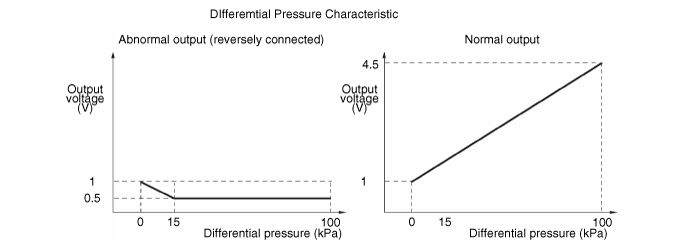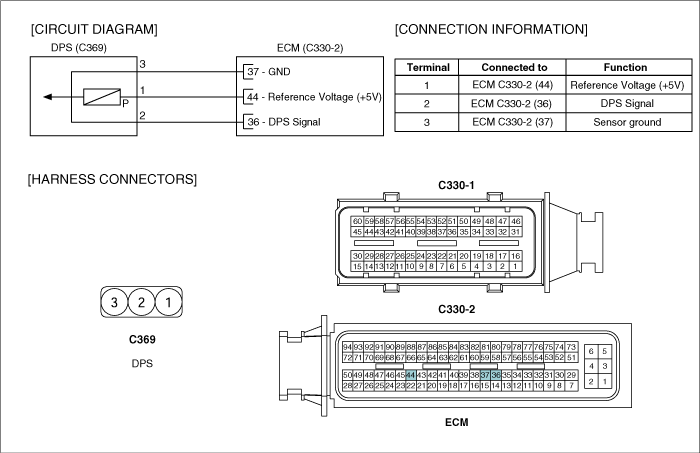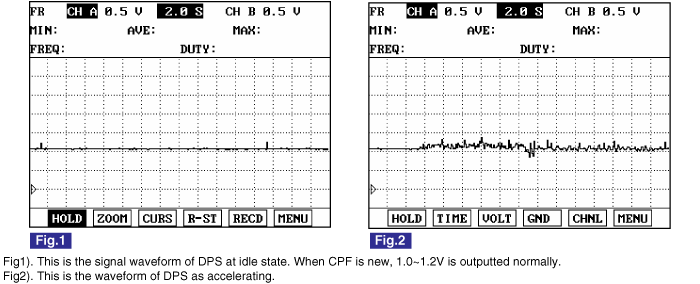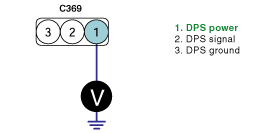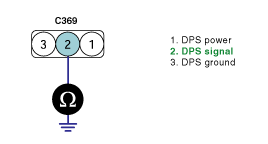Monitor "DIFFERENTIAL PRESSURE" and "PRESSURE PRE CPF" parameter on the scantool.
specification : "DIFFERENTIAL PRESSURE" and "PRESSURE PRE CPF" data must not be too high or low.

☞ When "DIFFERENTIAL PRESSURE" is too high : Check if excessive soot is accumulated inside of CPF before inspecting DPS related problem.
If needed, perform "CPF SERVICE REGENERATION" to burn the soot inside of CPF and monitor data change.
☞ When "DIFFERENTIAL PRESSURE" is too low : "DIFFERENTIAL PRESSURE" and "PRESSURE PRE CPF" data rises depending on engine load increase and the amount of soot inside of CPF. If differential pressure is not generated or soot is emitted without the rise of "PRESSURE PRE CPF" during excceleration, check CPF component failure.
※The "Scantool Data" shown above is measured at the vehicle with new CPF component. Therfore, data varies depending on CPF used duration and total driven distance.

